Companies and individuals often face legal challenges following the launch of their goods and services. This is because a third party may claim ‘mark infringement’. Besides, a conflict may arise due to a previously registered mark or mark application. Thus, it is crucial to carry out effective trademark searches in the jurisdiction where the business plans to launch its product.
While there are various jurisdictions around the world, in this article, we will cover how one can conduct trademark searches in the U.S.
Also Read: Trademark Variation Searches: All You Need to Know
Trademark Searches and their Benefits
Effective trademark searches can save you the expense of applying for a mark that might receive rejection if another company already has the rights for the proposed mark. The search results may also show whether your mark or a part of your mark appears as generic or as descriptive wording in other registrations. This may make it weak or difficult to protect. Besides these obvious ones, here are some other major benefits of performing effective trademark searches.
- Flexibility to Amend Marks – By performing a trademark search beforehand, an applicant can find all the possible similar marks and amend his/her proposed mark’s name to one that is available for registration.
- Saves Costs Associated with Litigations – Applicants can easily avoid litigations and the associated costs by performing effective trademark searches. This is because during their searches they can find confusingly similar marks that are already registered and hence can save themselves from legal disputes.
Also Read: How to Conduct Trademark Searches Cost-effectively
How to Conduct U.S. Federal Trademark Search?
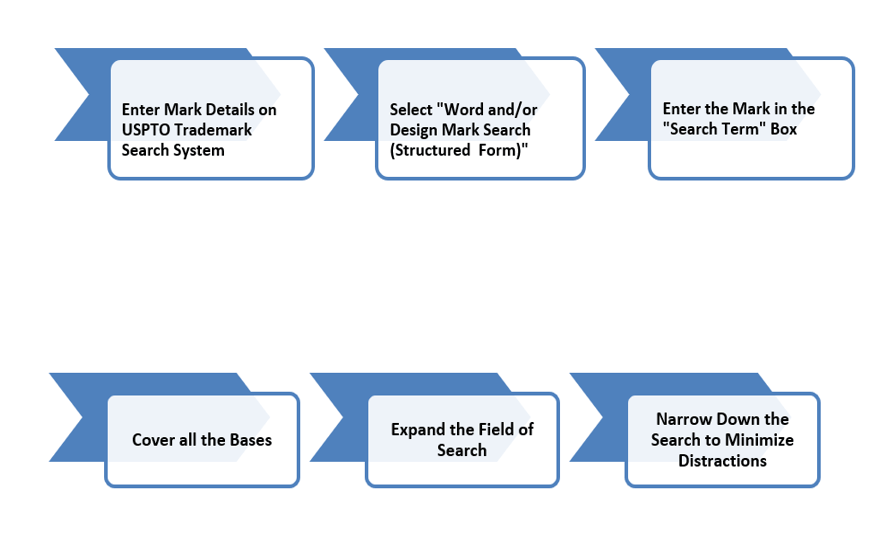
Step 1: Enter the Mark Details on the USPTO Trademark Search System
Start the trademark search by clicking on the first icon “TESS – Search Trademarks” in the “Tools” section on the USPTO Trademarks homepage. Here, TESS stands for Trademark Electronic Search System and its snapshot is below.
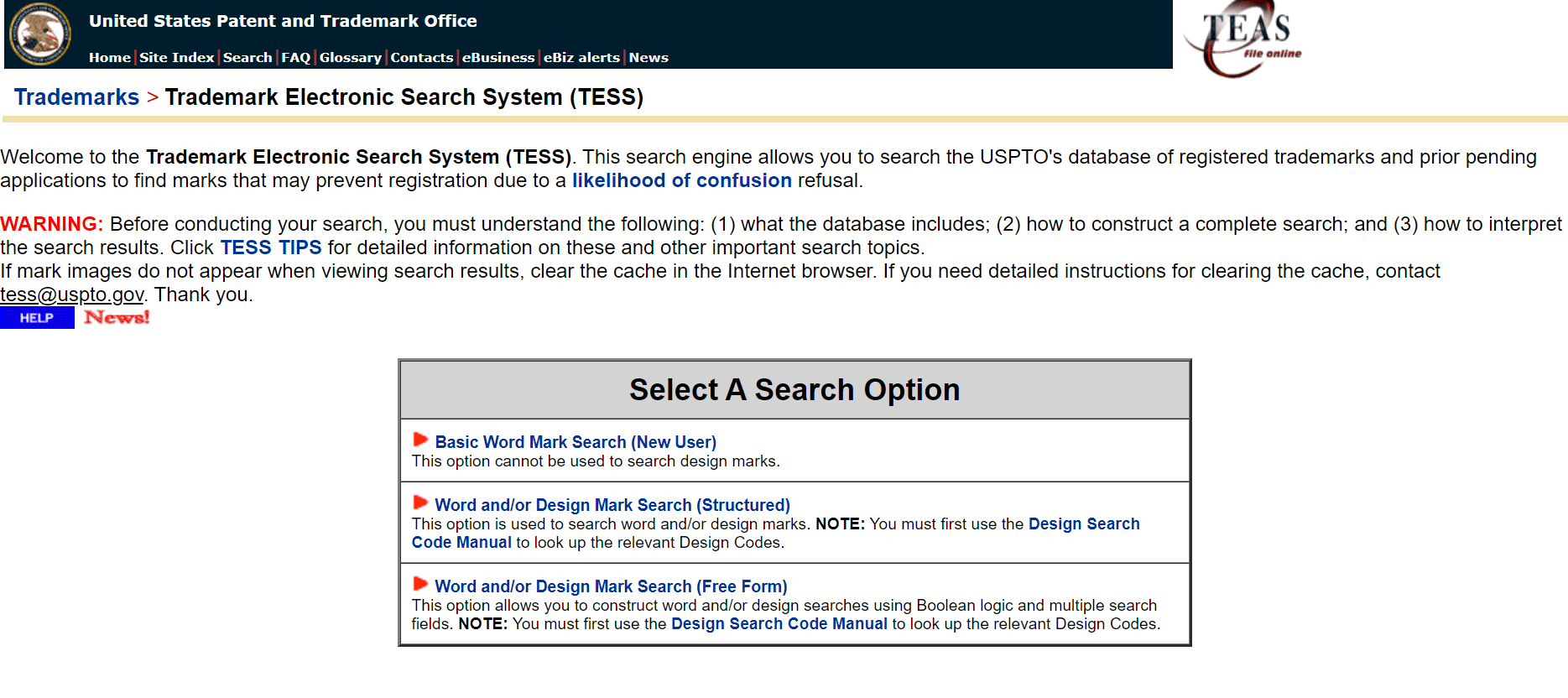
Step 2: Select “Word and/or Design Mark Search (Structured Form)”
After landing on the TESS page, just click on the “Word and/or Design Mark ftgtSearch (Structured form)”. This allows you to search various words or designs on the USPTO by formulating your own strategies. For instance, if you have to search the exact mark BULLS EYE then you can write BULLS-EYE in the search term, select full mark, and search. Here’s a snapshot for this step:
Step 3: Enter the Mark in the “Search Term” Box
In this step, you need to enter the mark details in the search term box and then click on the “Submit Query” button to check if you get a dead knockout right away. Generally, it returns several hits, but it is worth a try.
While searching you must remember to enclose the phrases in quotes. For instance, if you are searching for the mark BLACK MONEY, you will receive several hits if you simply type those two words. However, if you search for “BLACK MONEY”, the search results will be reduced drastically. The reason is that words without quotes are separate words as per the database and hence it fetches any trademark record with either word anywhere in the listing. Below is a snapshot of the search box:
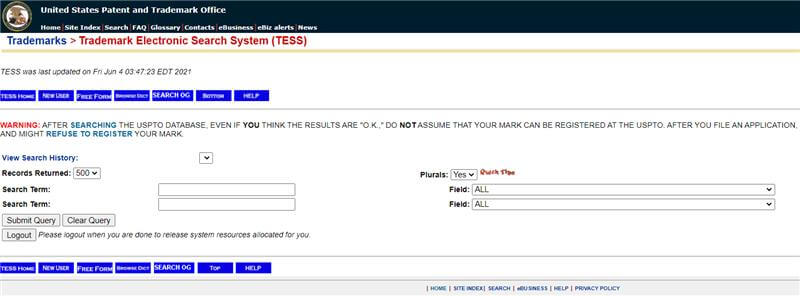
Step 4: Cover all the Bases
While searching for trademarks you must remember that the standard for selecting a mark is the “likelihood of confusion”. This means that you are searching for marks that might be confusingly similar to your proposed mark and not just those which are identical to it. For doing this, you must search for all the obvious variations in your first search, especially in the case of multi-part trademarks. For example, you must search the variations “BLACK MONEY”, BLACKMONEY, and “BLACK-MONEY”. You must also use truncation characters.
For instance, BLACKMONE*[BI] would fetch results such as BLACKMONEY and BLACKMONIES. Besides these two types of searches, you must also use plural forms. The structured form search page has a ‘Plurals’ box which one can change to “yes” for searching obvious plural forms. In case the plural form is not obvious, then you can try clear variations such as “BLACKMONEYS”. The snapshot below shows how you can select the appropriate field.
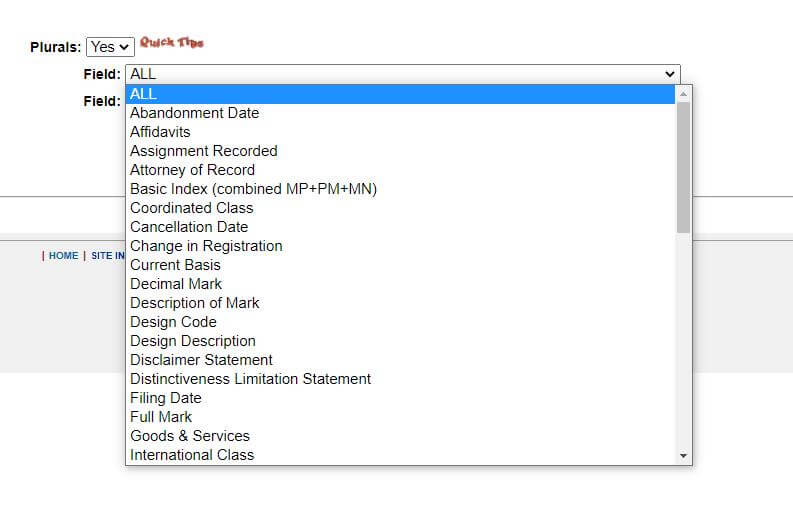
Step 5: Expand the Field of Search
In this step, you look for partial matches. For instance, if the word is multi-part, your first check would be for the entire mark (“BLACK MONEY” OR BLACKMONEY). After that, try each part separately and in combination: BLACK*[BI] AND *MONEY[BI]. Further, prefix and postfix truncation searches can also be extremely useful – BLACK* gets you any mark starting with “BLACK-“, and *MONEY gets you any mark ending with “-MONEY”. By combining them with “AND”, you not only get “BLACKMONEY” and “BACK MONEY” but also “BLACK 4 MONEY ” or “BLACK-A-MONEY”.
You must check for alternate spellings as foreign words may have alternate spellings such as “Hanukkah” / “Chanukah”. Names may also have variants such as “Brown” / “Browne”. Besides this, check for vowel substitutions – “oo” for “long-u”, “a” or “i” for “short-u”, and consonant substitutions “CS” or “KS” for “X” in words such as (Optics/Optix). Looking for word/number substitutions such as “4” for “for”, “2” for “to” or “too” is also a good idea. Here’s a snapshot of the word “BLACK MONEY”.
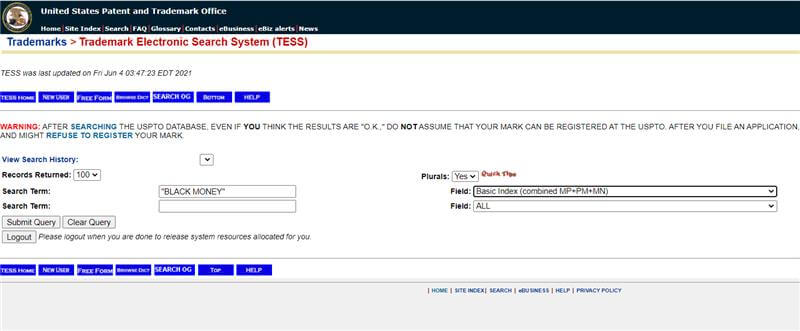
Step 6: Narrow Down the Search to Minimize Distractions
After you search set for the trademark and variations, you can lower it in case of an unusable hits. At first, try to narrow down the search by field. You can add a “field code” in brackets after a search term. For instance, XEROX[ON] would fetch all marks owned by Xerox as “ON” is the field code for “Owner Name”.
You must also use the [BI] field code while looking for words in a mark. This includes the word mark, translation, and “pseudo mark” fields. Pseudo marks are right spellings of deliberate misspellings, translations, spelled-out abbreviations, etc. You can narrow the search using International Classes in some cases. These classes form usage for the convenience of the USPTO. However, they do not affect the likelihood of confusion. For instance, eyeglasses are in class 009 but retail services selling eyeglasses are in class 044. This means that a search in 009[IC] would forgo the identical mark used for an eyeglass store. Hence, in case you want to search by class, you must try using [CC] rather than [IC], as the code must fetch the specific class as well as the classes related to it.
Lastly, [GS] searches can be conducted for particular goods and services. You can use the Description Manual to get an idea of the possible classes. Further, you can perform a search only on that class. This way you can notice the usage of goods/services on the marks which come up. Here are the final search results for “BLACK MONEY”.
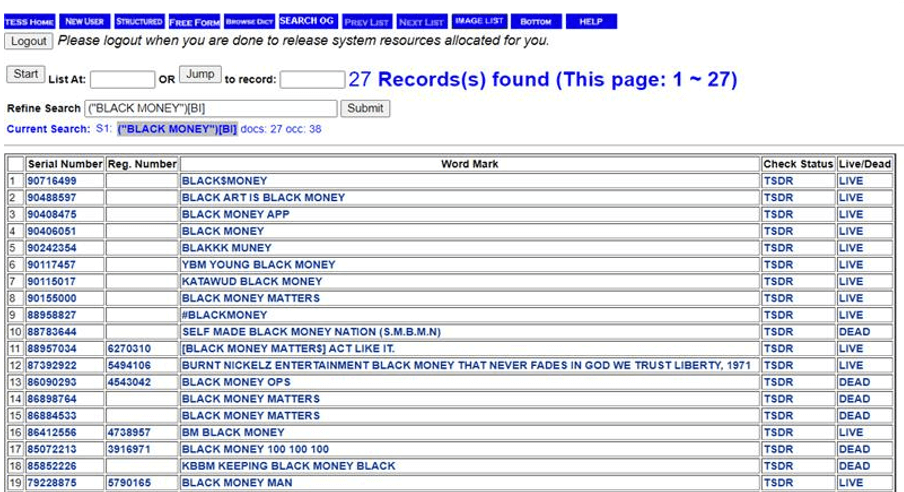
Also Read: Hire a Trademark Attorney: What’s the Need?
Choose TMReady to Conduct Effective Trademark Searches
A comprehensive US federal trademark search ensures that the proposed mark does not infringe on any other mark. It also ensures that one does not miss out on any trademark related to the proposed mark in the US.
Although anyone can conduct mark searches, it is advisable to take professional assistance from companies such as ours. TMReady’s Trademark Search service offers powerful insights that customers need before filing for trademarks. These searches help companies to save time and cost by enabling them to navigate infringement or rejection. To know more about this service, click here.
– Inderpal Singh Chowdhari (Trademark) and the Editorial Team
